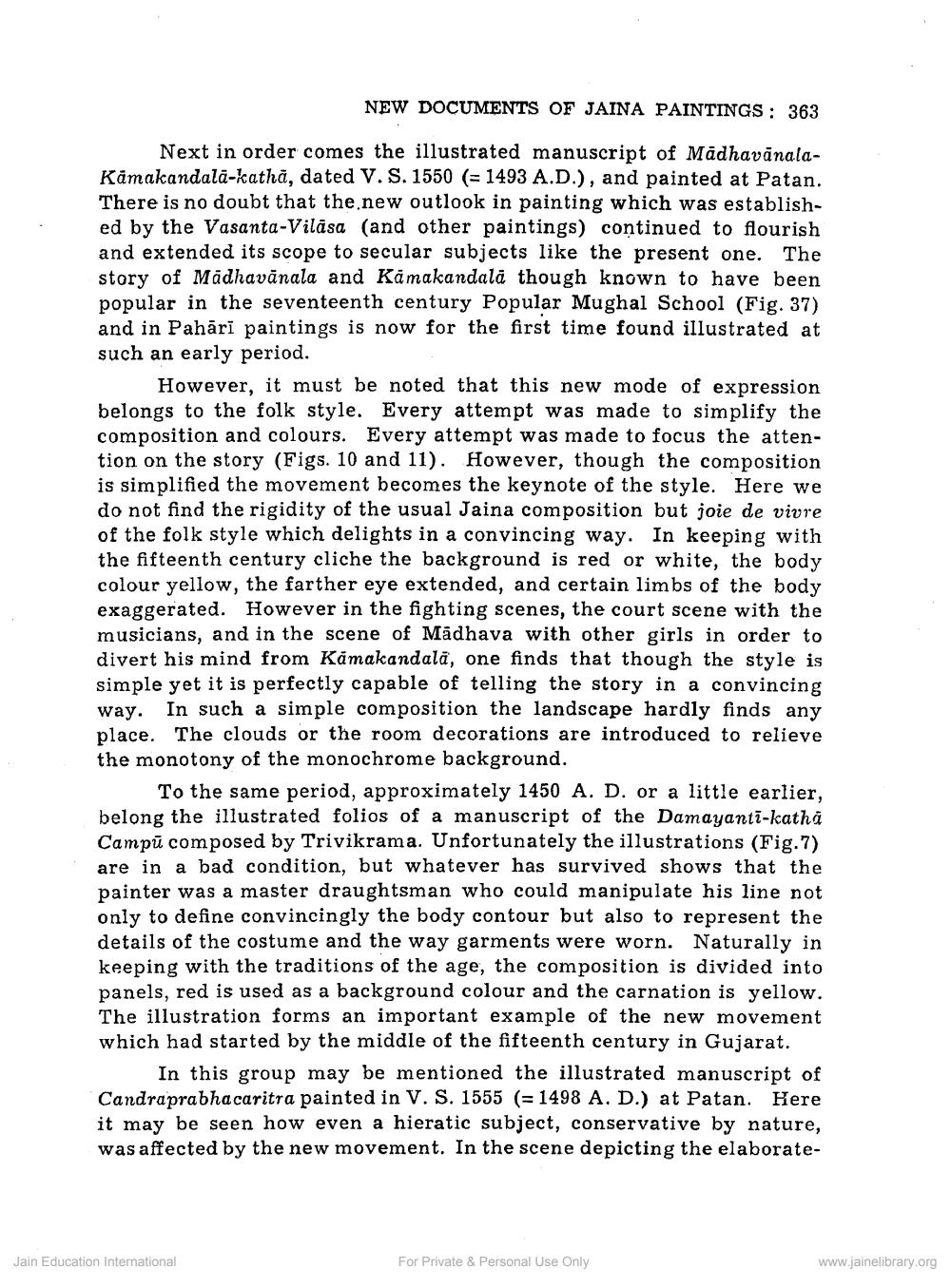________________ NEW DOCUMENTS OF JAINA PAINTINGS : 363 Next in order comes the illustrated manuscript of MadhavanalaKamakandala-Katha, dated V. S. 1550 (= 1493 A.D.), and painted at Patan. There is no doubt that the new outlook in painting which was established by the Vasanta-Vilasa (and other paintings) continued to flourish and extended its scope to secular subjects like the present one. The story of Madhavanala and Kamakandala though known to have been popular in the seventeenth century Popular Mughal School (Fig. 37) and in Pahari paintings is now for the first time found illustrated at such an early period. However, it must be noted that this new mode of expression belongs to the folk style. Every attempt was made to simplify the composition and colours. Every attempt was made to focus the attention on the story (Figs. 10 and 11). However, though the composition is simplified the movement becomes the keynote of the style. Here we do not find the rigidity of the usual Jaina composition but joie de vivre of the folk style which delights in a convincing way. In keeping with the fifteenth century cliche the background is red or white, the body colour yellow, the farther eye extended, and certain limbs of the body exaggerated. However in the fighting scenes, the court scene with the musicians, and in the scene of Madhava with other girls in order to divert his mind from Kamakandala, one finds that though the style is simple yet it is perfectly capable of telling the story in a convincing way. In such a simple composition the landscape hardly finds any place. The clouds or the room decorations are introduced to relieve the monotony of the monochrome background. To the same period, approximately 1450 A. D. or a little earlier, belong the illustrated folios of a manuscript of the Damayanti-kathi Campu composed by Trivikrama. Unfortunately the illustrations (Fig. 7) are in a bad condition, but whatever has survived shows that the painter was a master draughtsman who could manipulate his line not only to define convincingly the body contour but also to represent the details of the costume and the way garments were worn. Naturally in keeping with the traditions of the age, the composition is divided into panels, red is used as a background colour and the carnation is yellow. The illustration forms an important example of the new movement which had started by the middle of the fifteenth century in Gujarat. In this group may be mentioned the illustrated manuscript of Candraprabhacaritra painted in V. S. 1555 (= 1498 A. D.) at Patan. Here it may be seen how even a hieratic subject, conservative by nature, was affected by the new movement. In the scene depicting the elaborate Jain Education International For Private & Personal Use Only www.jainelibrary.org




